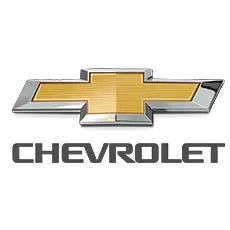1987 Chevrolet V20 problems

The third generation of the C/K series is a range of trucks that was manufactured by General Motors from the 1973 to 1991 model years. Serving as the replacement for the "Action Line" C/K trucks, GM designated the generation under "Rounded Line" moniker. Again offered as a two-door pickup truck and chassis cab, the Rounded Line trucks marked the introduction of a four-door cab configuration.
Marketed under the Chevrolet and GMC brands, the Rounded Line C/K chassis also served as the basis of GM full-size SUVs, including the Chevrolet/GMC Suburban wagon and the off-road oriented Chevrolet K5 Blazer/GMC Jimmy. The generation also shared body commonality with GM medium-duty commercial trucks.
In early 1987, GM introduced the 1988 fourth-generation C/K to replace the Rounded Line generation, with the company beginning a multi-year transition between the two generations. To eliminate model overlap, the Rounded Line C/K was renamed the R/V series, which remained as a basis for full-size SUVs and heavier-duty pickup trucks. After an 18-year production run (exceeded only in longevity by the Dodge D/W-series/Ram pickup and the Jeep Gladiator/Pickup), the Rounded Line generation was retired after the 1991 model year.
From 1972 to 1991, General Motors produced the Rounded Line C/K (later R/V) series in multiple facilities across the United States and Canada. In South America, the model line was produced in Argentina and Brazil, ending in 1997.

Social links
Common 1987 Chevrolet V20 problems
Based on the information gathered from various sources about the 1987 Chevrolet V20 pickup, several common problems have been reported by owners. Here are some of the issues along with detailed descriptions:
- Engine Stalling: Another common complaint involves engine stalling. Some owners have experienced instances where the engine stalls unexpectedly during operation. This could be caused by issues with the fuel system, such as a clogged fuel filter, a malfunctioning fuel pump, or problems with the ignition system.
- Fuel System Problems: Complaints have been made regarding the fuel system of the 1987 Chevrolet V20. Issues related to fuel delivery, fuel pump priming, and fuel leaks have been reported. These problems can lead to starting issues, poor engine performance, and even safety concerns due to the risk of fire hazards.
- Electrical System Malfunctions: Electrical system malfunctions have also been highlighted by owners. Problems with the ignition switch, neutral safety switch, and other electrical components have been reported. These issues can cause starting problems, intermittent stalling, and overall reliability concerns.
- Long-Term Storage Challenges: Some owners have faced challenges with vehicles that have been sitting for extended periods. Issues related to freeze plugs, corrosion, and general deterioration due to long-term storage have been mentioned. Proper maintenance and inspection are crucial for vehicles that have been inactive for a significant period.
These common problems reported by owners of the 1987 Chevrolet V20 pickup highlight a range of issues that can affect the vehicle's performance, reliability, and safety. Addressing these problems promptly through proper diagnosis and repairs is essential to ensure the optimal functioning of the vehicle.

How much can a 1987 Chevy V20 tow?
V20: 6,600 lbs.
What is a 1987 Chevy V20?
The V20 was offered as a higher capacity truck that had the second-highest level of gross vehicle weight by Chevrolet during this time. It is powered by a 5.7L V8 motor which sends power to all four corners through an automatic transmission and two-speed transfer case.
What engine does a 1987 Chevy truck have?
Following the transition of 1⁄2-ton pickups to the fourth-generation GMT400 chassis, the R/V series was offered with three engines from 1987 to 1991: a standard 5.7 L V8 with the option of either a 7.4 L V8 or the 6.2 L diesel V8.
Did Chevy make a V10 in 1987?
This 1987 V10 Silverado marks the first year in which the C/K series transitioned to the "R/V" nameplate and comes equipped with a 350ci V8 engine, all-wheel-drive, an automatic overdrive transmission, and air conditioning as well as power windows, locks, steering, and brakes.
What is a 1987 Chevy V20?
The V20 was offered as a higher capacity truck that had the second-highest level of gross vehicle weight by Chevrolet during this time. It is powered by a 5.7L V8 motor which sends power to all four corners through an automatic transmission and two-speed transfer case.
What engine does a 1987 Chevy truck have?
Following the transition of 1⁄2-ton pickups to the fourth-generation GMT400 chassis, the R/V series was offered with three engines from 1987 to 1991: a standard 5.7 L V8 with the option of either a 7.4 L V8 or the 6.2 L diesel V8.
How much can a 1987 Chevy V20 tow?
V20: 6,600 lbs.
Did Chevy make a V10 in 1987?
This 1987 V10 Silverado marks the first year in which the C/K series transitioned to the "R/V" nameplate and comes equipped with a 350ci V8 engine, all-wheel-drive, an automatic overdrive transmission, and air conditioning as well as power windows, locks, steering, and brakes.
1987 Chevrolet V20 car problems categorized by type of issue
After analyzing all complaints sent to the NHTSA and researching popular Chevrolet V20 problems, we found that the most common problems with these 2023 model year vehicles are:
- Service brakes problems
- Hydraulic problems
The graph below shows statistics for all 1987 Chevrolet V20 vehicle components and the number of complaints received.
1987 Chevrolet V20 complaints
The NHTSA has received 1 complaints about various vehicle components related to the 1987 Chevrolet V20.
SERVICE BRAKES, HYDRAULIC PROBLEM
- Date Of Incident: 2024-11-24
- VIN: 1GCGV24K4HF
- Components: SERVICE BRAKES, HYDRAULIC
- Summary: ANTI-LOCK BRAKE SYSTEM PULLSATED AT ANY SPEED CAUSING LOCK UP. THE ENTIRE SYSTEM WAS REBUILT, BUT STILL EXPERIENCED FAILURE. *YC
Other years of Chevrolet V20

Are you having problems with your 1987 Chevrolet V20?



Leave your review of 1987 Chevrolet V20